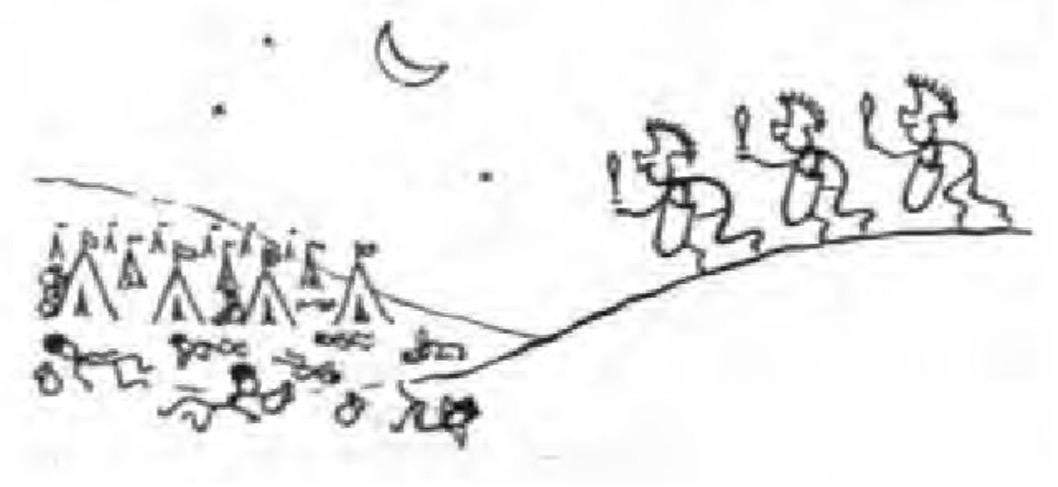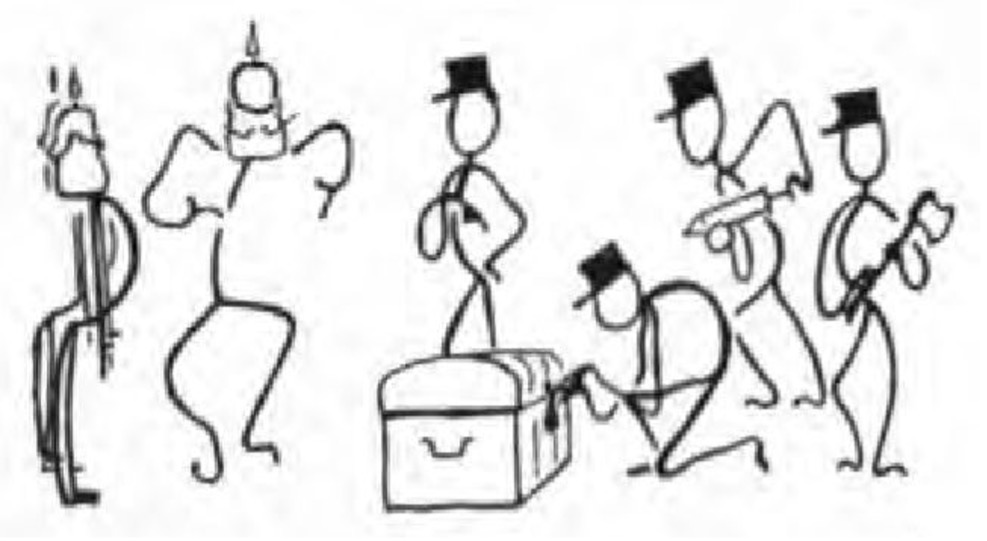Its Place in History
IN September, 1947, the American Association of Scientific Workers, in a memorandum to the General Assembly of the United Nations, defined Biological Warfare as the use in war of pathogenic, or disease-producing, bacteria, fungi, protozoa, rickettsiae, viruses and other agents of infectious disease, of their toxic products, and of certain other organic chemical poisons (animal or plant toxins, plant “hormones”) intended to kill or incapacitate human beings or economically useful animals, or to destroy or damage food crops or other useful plants.
In many respects, the concept of biological warfare may be likened to that of chemical warfare. In either case the agents may be considered as poisons designed to act detrimentally on animal or vegetable organisms. In application, the two fields are similar in that the agents may be disseminated over a relatively large area, thus threatening a large number of individuals simultaneously.
The modern idea of biological warfare depends for its application on the present standard of knowledge, and the ever increasing efficiency of techniques relating to the characteristics and functions of pathogenic organisms and chemicals. Bacteriology and its kindred sciences such as parasitology and microscopy are, however, only relatively recent developments in the field of scientific research.
Bacteria were seen and described by Anton von Leeuwenhoeck, a Dutch draper, in 1683, but it was not until the late nineteenth and early twentieth centuries, the era of such men as Louis Pasteur, Robert Koch and Joseph Lister, that the relation between bacteria and disease was put on a firm basis. The techniques of identification, segregation and classification, the methods of culture and storage in small and large quantities, and the precise relationships between micro-organisms and their pathological effects, have been studied and developed only in the past forty years.
It is understandable then that authoritative statements have been made to the effect that, apart from a few half-hearted and amateurish instances during the 1914-18 war and after, the potentiality of biological warfare as a war-winning weapon has yet to be proved in practice.

From the point of view of present day knowledge and techniques in the field of bacteriology this statement is, of course, perfectly true. However, as a matter of interest, it might pay us to adopt a broader view of the definition already quoted and see whether history can verify the oft-quoted statement that “there is nothing new.”
The scientists of the far distant past were the high priests, tribal witch doctors and later those seekers of the Philosopher’s Stone, the Medieval Alchemists. The production of poisons for warlike or other such sinister uses fell to these scientists of ancient days. Most of these poisons were obtained directly or indirectly from plants or animals, thus qualifying them for consideration as biological warfare agents. The use of poison as a weapon of war produces by means of its insidious nature, a considerable degree of surprise and an inevitable break-down of morale.
History tells us that a Carthaginian general, Maharbal, about 200 B.C. in a campaign against certain African tribes adopted the following tactics. He feigned retreat, leaving in his camp a large amount of wine mixed with an extract of Mandragora. The Africans drank the wine, fell into a narcotic sleep, and were attacked and slain during the night. The Mandragora is a plant of the nightshade family. The extract is still used in medicine as an hypnotic. A similar mass poisoning by means of plant extracts was employed by Duncan, King of Scotland, in a war against the Danish King Swen in the eleventh century.

For many centuries the poisoning of water supplies has always been considered an effective method of inflicting casualties and privations on an enemy. We are told that about 2,500 years ago, Solon, an Athenian statesman, besieged the Greek community at Kirrha. A small river ran through the town supplying drinking water to the inhabitants. Solon diverted the river from the town, forcing the besieged army to rely on small amounts of rainwater. Solon then ordered a quantity of Helleborus, a poisonous plant, to be thrown into the dammed river. When it was considered that sufficient poison had dissolved in the water the river was allowed to flow its normal course through the town. The unsuspecting town soldiers drank deeply of the regained water. To a man, they were stricken with violent attacks of diarrhoea. Solon captured the town without further ado.
Centuries later, in 1155, Barbarossa, Emperor of the Holy Roman Empire, besieged the Italian city of Tortona. Despite his powerful army, he could not capture the city. The citizens obtained their water supply from a spring, over which many battles were fought. Barbarossa had the spring poisoned by throwing rotting corpses of men and animals into it. The citizens had to drink this putrid water or die of thirst. Those who drank died and the remainder were compelled to surrender. The decaying corpses, of course, swarmed with death dealing bacteria. In these enlightened days, however, the bacteria may be cultivated, stored and disseminated under more favourable conditions, but, beyond the improvement in technique, the principle is the same. One of the most popular suggestions for the use of biological agents in any future war is that of the pollution of water supplies by selected cultures.
Incorporation of bacterial poisons in bullets and shell fillings has its parallel in the application of poisons to the tips of the arrows and spears of uncivilized tribes. The use by South American natives of the very powerful plant poison “curare” on blow pipe darts is well known. Not so well known perhaps is the custom of various tribes of bushmen in Africa, Livingstone reported that natives of the Kalahari district used the entrails of a small caterpillar for poisoning their spears and arrows. When drawn over a sore, this insect, which is known to the natives as “Nga,” causes fierce pain, and those wounded by arrows [ILLEGIBLE TEXT]meared with the poison die slowly in condition of violent delirium.
Other venomous creatures have been used to throw armies into confusion and panic, a condition most conducive to defeat. In the Third Century, the defenders of Atra, a town situated on the peak of a mountain, hurled earthenware vessels filled with poisonous insects against their attackers, throwing them into confusion. On a somewhat larger scale, Hannibal once gained a naval victory by throwing earthen vessels filled with venomous snakes on to the decks of an enemy vessel. Once again, it was the ensuing panic which led to final victory.
The biological agents so far considered, with the exception of those derived from decaying animal material, are lacking in one major characteristic, namely, they are not infective agents. Agents such as bacteria may cause infection in their hosts and in many cases the agents are characterized by a property not possessed by chemical or plant poisons; that of epidemicity or the capacity to spread from one infected man (or animal or plant) to others, and thus continue spreading over a more or less large area, so that a single effective attack, even though sharply localized at the source, may be potentially capable of spreading very widely.
This very important difference between modern bacterial agents and the plant and animal poisons of ancient times can well be illustrated by comparing the use by the Romans of vessels filled with poisonous insects with a comparatively recent attempt to spread bubonic plague in a Chinese city. Dr Lim of the Chinese Red Cross is said to have reported that in November, 1941, a lone Japanese plane flew at low altitude over Changteh, a city of fifty thousand people, dropping cachets of rice and wisps of cotton containing fleas infected with bubonic plague bacilli. Less than a week after the raid, six cases of plague were reported and more cases occurred as time went on. All victims died and autopsy confirmed that bubonic plague was the cause of death. it was a significant fact that there had been no plague reported in Changteh in ten generations and that the nearest epidemic centre was five hundred miles distant. At that time, Dr Lim believed that these small scale attempts were merely experimental and that Japan was planning full scale bacterial warfare for future campaigns.
Since the 1914-18 war, there have been many documents published setting out the problems involved in the use of biological agents in warfare. Many of these reports mention several attempts to infect animals during the 1914-18 war, and later experiments against human beings. Although there may be some doubt as to the authenticity of these allegations it will be of interest to mention them briefly as they may give an insight into possible future methods of use.
for example, in 1915, German agents in America, inoculated with disease producing bacteria, horses and cattle which were being shipped from the United States to the Allies on the Western Front.
Again, in 1916, a chest containing bacterial cultures, was sent from a military department in Berlin to the German military attache in Bucharest. The chestalso contained instructions for the dissemination of plague, glanders and foot-and-mouth disease among Rumanian horses and cattle. Fortunately, the attempt miscarried, the chest falling into the hands of the police.

Writing in the July, 1934, issue of “Nineteenth Century and After,” Wickham Steed, former editor of the “Times,” gave a description, based on German documents, of experiments by German agents in Paris in 1931. The agents liberated quantities of a harmless microbe near the inlets of the ventilating system of the Paris underground railway. Down below, on the platform, other agents were able to detect and register the organisms which found their way through the ventilating ducts. As the value of underground railways as air-raid shelters is well known, the significance of these experiments will be apparent.
During the recent war, there was no large scale offensive use of biological agents. However, the scientists were fully aware of the possibilities of such a mode of warfare and took appropriate precautions. For instance, in the United States, at the height of its development, the Special Projects Division of the Chemical Warfare Service of the Army, which carried the main responsibility for the biological warfare programme, had a total strength of 3,900 personnel. This group worked throughout the war at high pressure and under the strictest secrecy. Their achievements in their particular field were remarkable. Needless to say, most of the results of their labours have not yet been published for public consumption.
As an example of the stage development has reached, a routine unpurified preparation of psittacosis virus, a representative member of a group of highly infective diseases characteristic of bacterial warfare, has been reported to contain, per millilitre, approximately 20,000,000 doses for man. No published data are available on the dispersion efficiency of bacterial warfare weapons, but even if the efficiency is as low as .01 per cent, the potency of this material would still be extraordinarily high.
Biological warfare can no longer be regarded as a laboratory experiment. The extent to which investigations have been carried out and the results achieved indicate that it must now be considered as a positive threat in any future conflict. It must be given adequate consideration in any major defence scheme and its use in an offensive role must be mastered as a “threat in being” of equal importance to our potentialities in chemical warfare.
In its memorandum to the United Nations, the American Association of Scientific Workers concluded that “Biological Warfare” is the pre-eminent terror weapon. Unlike the atomic bomb it would not destroy property. It must be used to produce casualties in large numbers or in such a way that only a few cases would be needed to demoralize a whole population. Biological Warfare epitomises the total war that is now or will very soon be ready for use.


